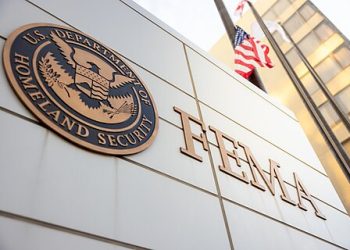One common border security concern regards individuals who enter the United States illegally and evade arrest by agents. Border Patrol refers to detected illegal entrants who it fails to arrest as “gotaways.” Thanks to nearly universal surveillance along the southwest border, successfully entering illegally without detection is very difficult, but Border Patrol often cannot reach the spot where a crossing occurs in time to arrest the person. Fortunately, gotaways have recently fallen.
“Gotaways” surged during the period that Border Patrol was exercising authority under Title 42 of the US health code to return crossers to Mexico. In our amicus brief outlining reasons to be skeptical of claims that Title 42 would cause a surge in illegal crossings, we explained that Border Patrol’s practice of placing people back on the other side of the border incentivized illegal crossings by giving individuals repeated chances to enter illegally. It also motivated people who would otherwise turn themselves in for asylum to slip in covertly.
Figure 1 shows the number of gotaways by month from October 2005 to October 2023 with the Title 42 era highlighted. The pattern is unmistakable: Gotaways increased almost continuously in parallel with the use of Title 42 before falling sharply after it ended. Under Title 42, gotaways hit 73,463 in April 2023. Title 42 ended on May 11, and in June gotaways fell 55 percent from their level in May to 32,840. They have remained down by about 59 percent in October 2023.
Although gotaways have not fallen back to pre‐Title 42 levels, this is largely because total migration to the US‐Mexico border is far higher than before. Getting rid of Title 42 without letting people come legally was never going to change every aspect of the situation, but it has not made the situation worse.
From the standpoint of border security, the situation has improved dramatically because fewer people are escaping screening by the Border Patrol. This means Border Patrol can effectively screen out criminals. What’s notable about Figure 2 is that “gotaways” typically tracks total arrests with some notable exceptions, but not in the case of the second half of 2023.
Figure 3 shows the “gotaway” rate—that is, the share of gotaways out of all arrests and gotaways. This is a rough approximation of Border Patrol effectiveness. As it shows, since Title 42 ended, the gotaway rate has fallen dramatically to below 14 percent, the lowest level outside of two months in 2019. This is a return to the trend under the Obama administration in reducing the rate of successful crossings.
CBP does not publish monthly gotaway data. The historical data through 2021 were obtained through Freedom of Information Act requests. The more recent monthly data come from various media sources, which match the yearly totals the government has reported. The trend in the media sources is also backed up by sporadic weekly data released publicly by the Border Patrol chief, which show gotaways fell by nearly 60 percent from the week of May 6 to the week of May 26 (Title 42 ended May 12) and remained down about 60 percent in October 2023. Media reporting for November shows that the daily average remains about the same as October.
Gotaway data have become more reliable over the past decade because border surveillance has increased dramatically from 2005 to 2023. Now, nearly the entire border has some form of electronic surveillance at all times. Moreover, the Obama administration made efforts to systematize the criteria for recording a gotaway to make the measure more consistent and reliable in 2014. Additionally, communication between stations was improved to remove double counting.
CBP also estimates the successful crossing rate using surveys of deportees. It first estimates the total flow of deportees returning to the US border based on surveys conducted by Colegio de la Frontera Norte International Border Survey. It then subtracts the number of deportees that it arrested and assumes the remainder escaped detection. Of course, some do attempt to reenter when they initially indicated no intention to do so, and some do not attempt to reenter when they said they did. CBP has made additional efforts to account for individual characteristics of crossers to resolve some of this problem.
While the model‐based estimates are certainly not perfect, these data show that CBP’s observational data (gotaways) are improving compared to the models. Figure 4 compares the observational apprehension rates to the model‐based rates. It shows that the observational data converged with the model‐based data around 2014. From that point on, the observational gotaway data accounted for between 75 percent and 100 percent of modeled gotaways.
Although the gap between observational and modeled estimates was the largest in 2020 since 2014, observational gotaways still accounted for about 75 percent of modeled gotaways. 2020’s decline in modeled effectiveness likely reflects that people’s intentions changed in response to the pandemic and fewer people tried to enter illegally than the model predicted.
There was no observed increase in gotaways during fiscal year 2020, which ended in October (though there was a dramatic increase by December 2020).
The United States has a legitimate interest in regulating the entry of serious criminals and other threats to Americans, and border security is a significant component of that effort. Ending Title 42 improved border security and reduced successful illegal entries. This should force the many members of Congress who opposed ending Title 42 to rethink their position.
















